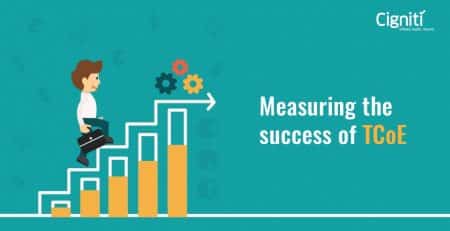How Agile Can Enable Organizations Grow Faster
Per the Chaos Report from Standish Group “Across all project sizes, Agile approaches resulted in more successful projects and less outright failures”. About 39% of all Agile projects are successful compared to 11% for waterfall.
How can organizations be successful with Agile? What are the successful ones doing, really? The answer has something to do with Agile Coaches – they play a key role in successful Agile Transformations!
What
In the grueling world of modern competitive sports such as tennis and athletics, athletes have come to rely on their coaches more and more for enabling them to reach the pinnacle of Olympic glory – Citius, Altius, Fortius (Faster, Higher, and Stronger). Today coaches have become the difference between successful sporting stars and also-rans. Sports coaches help convert the athletes into becoming a Usain Bolt or a Novak Djokovic, athletes who are consistent, predictable, and always delivering amazing results.
How do they do it? It’s training, training and, you guessed it, more training. Because practice always makes perfect. And the sports coaches guide, mentor and help the athletes focusing on their improvement areas, coming up with a specific regimen consisting of exercise, diet and discipline-specific practice routines. Routines which they go over day after day, week after week, month after month.
[Tweet “#AgileTransformation implies devising a long-term roadmap to transform the organization. #AgileCoaches #SayNoToBadSoftware”]
In a similar manner, Agile coaches help companies reach their own version of the Olympic pinnacle:
- Faster (feedback loops and time to market)
- Higher (project visibility and adaptability to changing priorities), and
- Stronger (collaboration and focus on delivering value)
Why
Many organizations are struggling with their Agile initiatives. Jumping into Agile development without putting in place the required ‘environment’ and ‘culture’ changes is flirting with failure.
In my experience, these are the most common challenges faced by companies in their agile journey:
- Cross-functional teams working in the same initiative do not all follow Agile. Plus, not all use the same tools for project tracking
- All dev and QA teams not involved in Program Increment (PI) Planning meetings
- Some teams such as UAT and release teams not involved from the beginning of the sprint. Consequently, they do not have full visibility on requirements
- Communication between business and IT teams is weak. Ideally, changes in priorities (both in business and development) should be discussed and teams should be in agreement
- ‘Definition of Done’ is not clear. Teams do not have clear understanding of ‘done’ criteria at User Story, Sprint, and Release level
- Sprints don’t end with working software (Potentially Shippable Increment) as there’s not enough time for testing towards the end. This results in hot fixes post-release to address production issues
- In general, Agile process rigor is weak resulting in sprint and release goals not being met
Switching to Agile Ways of Working from the more conventional methods requires change. A huge amount of change, for both the teams and management. Resistance can be expected. This requires, above all, a change management plan to be part of your Agile adoption strategy. Also, Agile coaching and training should be implemented organization-wide to ensure teams truly absorb the core values and principles associated with Agile development. And to ensure there is a consistent understanding and implementation of Agile process across the enterprise. The last thing one wants is multiple interpretations of what it means to be agile.
[Tweet “#AgileMethodology Can enable organizations to grow faster? #AgileTransformation #AgileCoaches #SayNoToBadSoftware”]
How
Agile coaches perform an assessment of an organization’s current overall Agile maturity and identify problem or improvement areas along with a roadmap. To arrive at this, they closely observe and record the workings of the teams on a day to day basis over a period of time. They pay close attention to the way the teams (product owners, development teams, scrum masters, managers, leaders and other relevant stakeholders) work and interact with each other.
Agile Coaches then derive an “exercise, diet and daily routine” for the development teams, similar to Sports Coaches. For example,
- Agile Coaches devise Scrum events such as Daily Standup, Sprint Planning and Reviews etc. which provide the rigor and discipline to development teams to deliver effectively (- The Routine or Cadence).
- They plan or conduct trainings for individuals or teams as needed for filling gaps in knowledge (- this is The Diet or ‘nutrition’ required for high performance teams). This can be process related or something more specific to the project (technical or functional).
- Lastly, Agile Coaches may come up with team building activities periodically to ensure the team working, communication and collaboration is top notch. This is The Exercise for teams; ensures teams are “fit” and team working is “healthy”.
Fundamentally,
- Agile Coaches mentor teams, scrum masters, product owners, engineering managers with the objective of building a strong Agile culture.
- They identify the roadblocks for effective functioning of the team – the issues that are disrupting the flow of work. The goal is to avoid rework as much as possible, which is wasted effort.
- Agile Coaches look out for traits of traditional waterfall culture and practices among team members and managers and gently push them to a true Agile way of thinking and working.
- They work closely with multiple teams in their journey towards high-performance Enabling teams to understand, learn and behave in an agile way to drive customer and business value.
- They facilitate teams in writing effective user stories, which is of paramount importance for building quality software which serves the needs of the customers.
- They provide Agile/Scrum Training to teams for better understanding of Agile methods & practices.
- Agile Coaches observe teams’ self-organization, participating in various meetings and providing feedback for continuous improvement, including team behaviors.
- They monitor team traits for better teamwork and team communication. Improving teamwork through various games, team building
- They work with other stakeholders for standardization of Agile practices across globally distributed teams.
- They ensure Agile becomes more of a culture and not just a process, within teams.
Benefits
Per VersionOne “Annual State of Agile” Report, top 3 benefits cited by practicing organizations are:
- Manage changing priorities (87%)
- Team productivity (85%)
- Project visibility (84%)
The Agile Coach focuses on coaching and enabling an Agile mindset in the development teams ensuring there is a consistent understanding across the organization. They help create an environment where continuous improvement of the development process is the focus and where everyone’s common goal is to deliver outstanding software as fast as possible while working together as one team. Agile Coaches help teams become high performing units focused on delivering amazing value to their customers.
Conclusion
As Aristotle said: “We are what we repeatedly do. Excellence, therefore, is not an act but a habit”. And Agile coaches help in inculcating Agility into the DNA of an organization so that teams start thinking Agile and doing Agile, naturally. Agile Coaches are the difference between High Performing organizations and also-rans! In today’s business world, that’s the difference between life and death.
[Tweet “Get interesting insights on how #AgileCoaches ensure Agile Maturity & build a relevant roadmap? #AgileTransformation”]
Agile Transformation is about devising a long-term vision and mission with the objective of transforming the organizations ways of working, current work culture, and mindset of teams. Agile Transformations improve organizational responsiveness by:
- Helping them focus on customer value
- Improving collaboration and reducing siloed ways of working
- Adapting to change, and
- Learning to fail fast!
Cigniti’s Test Advisory & Transformation Services bring in high visibility to the organization’s processes from inception to delivery of solutions and helps clients attain a higher level of QA & Process Maturity. This service leverages standard industry frameworks such as CMMI/ISO/ITIL/TMMi/TPI and Cigniti’s decade of experience in Software Testing and QA. Our testing experts utilize industry best practices, indigenously developed processes that complement the client’s in-house processes to ensure the best possible options for a given business context or a scenario.
Contact us to know more.




Leave a Reply